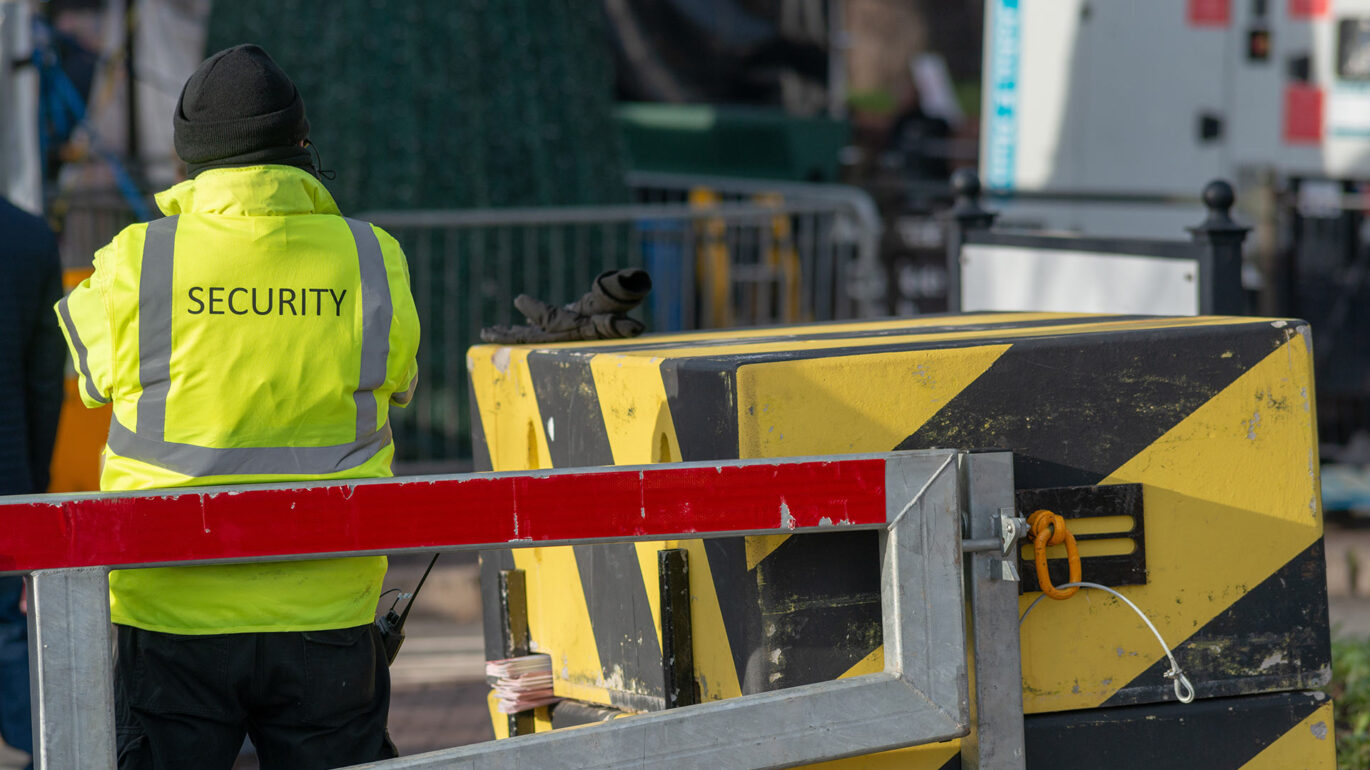Businesses across Ontario, large and small, are hiring security guards to help address rising instances of theft, vandalism, and violence. “Businesses often hire security guards because they have been a target of theft and are looking to control losses or they are entering into a new area of business, such as selling alcoholic beverages, and want to protect their employees and their assets,” explains Amanda Gorman, Health and Safety Consultant with WSPS.
Given the increase in theft and violence that business owners are seeing, it’s no surprise that they are taking steps to heighten their security. However, as an employer, there’s quite a lot to consider when security guards join your staff. “First of all, they must be licenced,” says Amanda. In Ontario, security guards and private investigators must have a valid licence and carry it on them at all times – either a physical copy or a digital copy accessible on their phone. “Whether paper or digital, make sure to get proof of licence before hiring,” says Amanda.
When it comes to hiring, many business owners turn to security agencies to fill these positions. “Hiring or contracting from a security agency is great, but the hiring employer is still responsible for health and safety,” says Amanda. This includes proper orientation and onboarding, training on policies and procedures, and information about hazards specific to the workplace. Amanda recommends starting with a job hazard analysis to ensure that hazards and risks are understood.
“Most employers have a health and safety policy and safe work procedures for the tasks their employees perform,” says Amanda. “When you add a security guard to your staff, it’s a different job with different tasks, so different hazards need to be considered.” She also points out that when employers hire a security guard, it usually means that they have recognized a new potential hazard in the workplace. So, the possibility of violence related to theft is something that needs to be added to the existing violence risk assessment for all employees, if it has not been addressed already.
5 hazards to address for security guards
Before the start of their first shift, you need to complete a detailed health and safety orientation with new security guards. “The orientation is not limited to their workstation. Security guards need a full tour of the facility—inside and outside—along with information on the hazards associated with each area,” says Amanda. As you complete a job hazard analysis, keep these hazards in mind.
- Working alone—An established check-in procedure is vital for protecting any employee who works alone, including a security guard overseeing your premises after-hours. Have a plan for regular contact and a procedure outlining what happens when contact does not occur when expected.
- Violence—All guards should be given a copy of your organization’s Violence Risk Assessment. This will help ensure that guards are aware of known violence risks and are able to make informed decisions about safety and changes in security posture. If an incident occurs, security guards may be pulled in several directions and will often have to make quick decisions. Clear policies and procedures on workplace violence (e.g., what to do if an individual has a weapon, when to call 911, how to report an incident and to whom) and training on those procedures are critical so that your security guard knows exactly what to do in specific situations. “Work together with your security professional to ensure there is understanding and agreement on both sides regarding safety and security protocols at your business,” says Amanda.
- Fatigue—This is something that may affect all employees; however, those who work nights, as many security guards do, are at greater risk of experiencing fatigue. As an employer, plan for this by scheduling proper coverage for breaks. If your guard is also a driver for your business, be mindful of their Ministry of Transportation driver log. Drivers require ten hours of rest in a day and cannot drive more than 13 hours in a day.
- Radiation or chemical exposure—Security guards usually access all areas of a building or facility, which could include areas where radiation or certain chemicals are present. Guards require the same training (e.g., WHMIS) and personal protective equipment (personal protective equipment (PPE) e.g., coveralls, respirator, etc.) to enter these areas as those who regularly work there. They must also receive training on how to use, inspect, and maintain their PPE.
- Heat and cold stress—Similar to chemical exposure, security guards may be dealing with exposure to extreme heat or cold, either outdoors or in climate-controlled indoor environments. It is also important to recognize the length of time the security guard is exposed to extreme temperatures on each shift. Ensure security guards have the clothing, tools, or equipment they need to keep themselves safe, as well as the ability to take breaks from the heat or cold as needed. Train them to recognize the symptoms of heat stress and cold stress and to report dangerous conditions directly to their supervisor for assistance.
How WSPS can help
Start by checking out WSPS’ Workplace Violence and Harassment resource page. You will find policy and program templates, videos, and recommended training.
Consulting
Connect with a WSPS expert to develop and evaluate your workplace violence and harassment prevention program.
Training
- Workplace Violence and Harassment Awareness (eCourse, 40 mins)
- Violence and Harassment Prevention: Situational Awareness and De-escalation (online instructor-led, 4 hours)
Resources
The information in this article is accurate as of its publication date.



